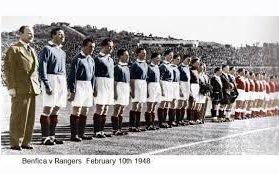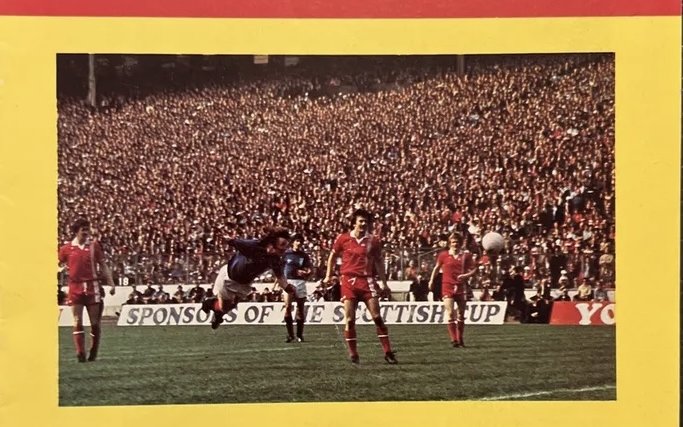A review of Adam Thornton’s book Gerrard’s Blueprint.
Football is like sex in that most people involved in aren’t very good at it and fewer still understand why that is.
This book will not improve your ability to curl toes but I would defy anyone to read it and not feel that they’ve learned a lot and – more importantly – felt a deeper appreciation for what those in charge of the footballing operations at a club are really trying to do on a day-to-day, and season by season basis.
Adam Thornton is a bright, enthusiastic, handsome, and occasionally interesting contributor to the Heart & Hand network where he is the long-time co-host of Tactics Talk. He also moonlights on Twitter as the permanent secretary of the James Tavernier fan club. This, his first book, is alarming short on exclusive photos of Tav Dudeoir, but extensively covers (and explains) the approach taken by Steven Gerrard and his team, from their coaching philosophies and influences through the implementation and modification of these principles in his time as Head Coach at Rangers.
The book is split into three main sections, focusing on the tactical philosophy, formation evolution, and finally player evolution in the three and-a-bit years with Gerrard in charge at Ibrox. It is thorough, informative, and in-depth but never dry.
Some of this is (inevitably) likely to test the patience of the casual fan but the single most pressing reason to praise this offering is to consider the use of source materials; this may be one of if indeed the only book I’ve ever read that cites only online available material but it is crystal clear throughout that Adam has put in the work, and the existence of published studies such as this is crucial to a greater understanding of both the period but especially the particulars.
One of the most interesting aspects to this book is the way that it presents to the reader the reality of the modern game and the role of the manager/head coach: for much of the book is not really about Gerrard at all. That’s not to say that Thornton doesn’t do a good job in bringing Steven Gerrard’s football focus, his determination, or his general plan to life –it’s much more of a compliment to the way Gerrard approaches the role of Head Coach and the realisation he has regarding who is best suited to deal with different aspects of preparing the team.
And neither is this a case of an author setting out to write one story and another presenting itself on the journey; rather, it’s an effective insight into how the management team functions, how much delegation is necessary to be able to effectively control the workings of a football club, and – let’s be honest here – a love letter to Michael Beale.
Nicely anticipating this possible concern regarding the impenetrable nature of formations and systems, Michael Beale is to the point – “The formation you choose is not that important. Whatever the on-paper formation, the players can form different shapes in-game, and the freedom to rotate is key to making this happen. The ability to be flexible and unpredictable is key in the modern game.”
He may be affecting a form of modesty here but it comes over loudly and clearly that although notable key principles were never to be conceded in the Gerrard era, the notion of rigidity to a certain approach – whether in terms of formation or regarding shape – was not set in stone.
Cherry-picking your favourite moments from this book will likely say much about the sort of fan you are (I, for instance, was sorely tempted to throw this book at the wall when I happened upon the beginning of a sentence which reads: “Defensive organisation is not sexy…” but soon corrected this impulse when, firstly, I realised we were moving on to discussion of how important it is and, secondly, that I was reading this on the laptop and that may well be a less satisfying action than lobbing a paperback at a lampshade).
An impressive early highlight comes during a discussion of the development of tempo and counter-pressing which leads nicely into consideration of one of the most controversial of intangibles: mentality and character. Too often this leads into abysmal Ted talk style nonsense that is barely coherent even before it leaves the lips or the fingers of the expert, but Thornton’s presentation of the approach favoured by Gerrard, Beale, and co is fascinating. This is partly as it’s a topic so often at the heart of fan grumbles (and despite some remarkable instances one that won’t go away under new management) but also one where criticism seems to get beyond what is acceptable – saying someone is objectively a duffer of a left back is one thing but suggesting they lack some form of internal desire or motivation is much harder to assess or, one would imagine, to process.
The ecumenical discussion regarding Christmas trees makes perhaps the best example for something at the heart of this book: flexibility. Those beholden to a certain formation, or certain style, can only be afforded this luxury when the personnel can sustain it but within even a simple enough starting point the room for development is huge – The examples of Ancelotti’s Milan, the last WC winning French side, and Klopp’s Liverpool show you how very differently an apparently very similar looking 4-3-2-1 can be in application.
Throughout the focus on the development of the Gerrard period demonstrates a fine mix of attention to detail and appreciation of how and why the changes in shape or approach occurred; we move from a period where a standard 4-3-3 is common to a position where most of the width in the team is via the two full backs as the importance of the position generally revolutionises the game across Europe. Of course, the route there is often as much dictated by a need to change on account of injuries, suspensions, and the like as it is by the addition of new players with different skill sets. Flexibility: dummy. But the wider point Adam makes about the improvement when facing the low block coinciding with the significant change in the quality of the attacking players available to the coaching team again reiterates Beale’s general point regarding tweaks being easier when you have more at your disposal.
Lest I’m making this all sound a little straightforward or – worse – dull, I should point out that this journey through the changes under Gerrard is nothing of the sort, and the short passage on the advantages we gained from the prolonged gap between seasons due to COVID is utterly fascinating; the combination of science, data, individual planning, and intensive focus on small groups shows a club system at its peak.
One of the central strengths of Gerrard’s Blueprint is Adam Thornton’s ability to make significant points regarding player development, or the particular skill set of a player improving or often changing the way the team performs, with the backing of figures and graphics. Examples of certain games, or certain moves within those games, can be explained clearly and emphatically. None of this is done to bamboozle the reader or overwhelm with “and now we turn to slide 1690”style turbidity. Instead, it all helps to bring to life subtle but important points that would otherwise run the risk of becoming lost or lacking in clarity.
For example: There’s a great part on why swapping Balogun and Helander for certain games was so smart; a tremendously enlightening comparison of how a player brought in for his skillset (Barisic) eventually complements so effectively a player who is the poster child for tactical evolution of the team (Tavernier); and a deeply depressing but necessary evaluation of why we were found out and beaten at Ibrox in a derby largely because we thought we could get away with having two right footed players on the left side of defence (I’ve spared their names but one of them is the worst signing Gerrard made).
Perhaps my favourite portion of this analysis focuses on the relationship that developed on the left between Barisic, Kamara, and Kent and how the full back came to life in the final third as a result– this is a perfect example of some deep thinking on the part of the coaching side beautifully brought to life by the author. And if I could understand it then so can anyone. (Kamara, in general, is correctly afforded high praise for his versatility and tactical value, all of which makes his somewhat inconsistent and lacklustre recent domestic effort all the more agonising.)
There was much made at the weekend about the fact that the midfield from 2020 finished a game in season 22/23 and although that’s harsh on Davis, Jack, and Kamara there’s some fitting characterisation here of how well that flat three excelled in Europe and against Celtic; although the writing on the wall regarding the perils of too much, slow, possession is already highlighted.
Beale is quoted extensively regarding the importance of changing up that side by adding the extra midfielder in a forward position (notably Aribo) and this is one instance where I was eager to check out the full transcript of his words – the entire 2016 seminar is worthy of consideration. The move towards creative midfield players – and clever use of Arfield and the third man run – is at the heart of the success of the area in the 55 season.
The one part of the book where you can almost feel the author loosening the balanced and sober tone comes when we move on to what I will label the Tavernier and Candeias fan fiction section. You can feel the passion on the page. And, not to put too fine a point on it, it’s very difficult to argue with some of the post-Candeias issues in that RW area.
It’s even harder to read the references to Tom Culshaw and the intensive work he performed on set-pieces without tearing up. It seems at this point like a history book, and an ancient one at that, although the multiple mentions of Alfredo reds leading to necessary change – even when necessity leads to something useful as in the case of utilising inside tens for his replacement Defoe – helps ensure you’re brought back to the present. The parting gift that is the Signature Goal section both ties the whole work together like the rug in the Dude’s apartment but also allows a chance for recent games to be viewed in a different way, and hammers home the glorious use of the graphics.
It’s slightly unfortunate – and not the fault of the author – that the publication of this book has been somewhat delayed, lending some of the discussion a much more distant edge than would have been intended. Even an ordinary year is a long time in football, and it seems clear in a general sense that these pandemic times have had a significant effect in how we recognise and recall events.
However, many of the important questions it poses are those that can only ever fleetingly or partly answered; Gerrard, Beale, and co. ultimately couldn’t consistently improve and evolve –and it’s up to you, the reader, to decide if that’s because of the fundamental issues at a club with our ambitions in conflict with our financial willingness or a wider point regarding the shelf life of a management team and group of players.
In any case, you should buy this book. Adam needs to eat. And when the worst comes to the worst and you can’t pay your electricity bills, or afford the Rangers Champions League Semi Final Day Trip to Madrid, you should place this excellent analytic offering in the pile marked “Burn only after your Shoot 1986 annual.”
You can purchase Gerrard’s Blueprint at
https://heartandhand.co.uk/gerrards-blueprint/
Adam Thornton can be praised or condemned on Twitter
https://twitter.com/adamski152




